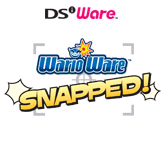
Wario is a character in Nintendo's Mario video game series that was designed as an archnemesis to Mario. Wario first appeared as the main antagonist and final boss in the 1992 Game Boy game Super Mario Land 2: 6 Golden Coins. His name is a portmanteau of the name Mario and the Japanese word warui, meaning "bad". He is usually portrayed as a greedy treasure hunter who routinely loses the treasure or artifacts he ultimately finds. Since his debut, he has appeared in the majority of Mario video games. Hiroji Kiyotake designed Wario, and Charles Martinet voiced the character from 1993 to 2023.

Mr. Game & Watch is a 2D generic stick figure-styled silhouette character, created by Nintendo as an amalgamation of various characters that appeared in the Game & Watch handheld consoles. He was created by Gunpei Yokoi, with an intention of representing the Game & Watch collection, as the consoles had no main mascot, rather characters designed for the minigames. He debuted in Ball from Game & Watch. Mr. Game & Watch has appeared as a cameo in several other Nintendo games, such as Donkey Kong Country Returns, WarioWare: Touched!, Rhythm Heaven Fever and Super Mario Odyssey.
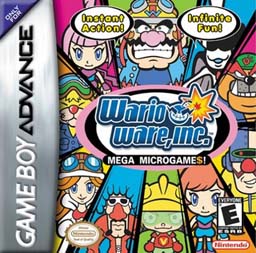
WarioWare, Inc.: Mega Microgames!,, known as WarioWare, Inc.: Minigame Mania in the PAL region, is a minigame compilation video game developed and published by Nintendo for the Game Boy Advance. The debut title in the WarioWare series, the game is about rapid completion of "microgames", short minigames given to the player consecutively and with increasing speed per each game complete. The game's concept was inspired by the "Sound Bomber" mode of Mario Artist: Polygon Studio for the Nintendo 64DD. The music and sound effects were recycled from Wario Land 4. The game was produced by Takehiro Izushi and directed by Hirofumi Matsuoka. Matsuoka was also the director of Polygon Studio. Mega Microgames! was released in 2003; in Japan in March, in North America and Europe in May and in Australia in June.
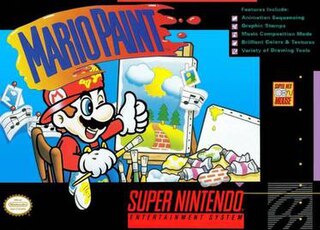
Mario Paint is a 1992 art creation video game developed by Nintendo Research & Development 1 (R&D1) and Intelligent Systems and published by Nintendo for the Super Nintendo Entertainment System. Mario Paint consists of a raster graphics editor, an animation program, a music composer, and a point and click minigame, all of which are designed to be used with the Super NES Mouse peripheral, which the game was packaged and sold with. Per its name, the game is Mario-themed, and features sprites and sound effects that are taken from or in the vein of Super Mario World.

Super Mario 64 DS is a 2004 platform game developed and published by Nintendo for the Nintendo DS. It was a launch game for the DS. Super Mario 64 DS is a remake of the 1996 Nintendo 64 game Super Mario 64, with new graphics, characters, collectibles, a multiplayer mode, and several extra minigames. As with the original, the plot centers on rescuing Princess Peach from Bowser. Unlike the original, Yoshi is the first playable character, with Mario, Luigi, and Wario being unlockable characters in early phases of the game.
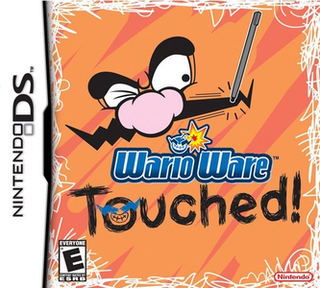
WarioWare: Touched! is a minigame compilation party video game released by Nintendo for the Nintendo DS. The fourth installment of the WarioWare series, and the first of three on the Nintendo DS, the game involves rapidly completing "microgames" — simple minigames lasting extremely short periods of time — as quickly as possible. The microgames are exclusively controlled with the Nintendo DS's touchscreen and microphone.

WarioWare: Twisted! is a video game for the Game Boy Advance, developed by Nintendo SPD with Intelligent Systems and published by Nintendo. It was released on October 14, 2004 in Japan; May 19, 2005 in Australia; and May 23, 2005 in North America. The second game in the WarioWare series and the seventh in the Wario series overall, Twisted! was the last Wario game to be released on a Game Boy family system.

Electroplankton is an interactive music video game developed by indieszero and published by Nintendo for the Nintendo DS handheld video game console. It was first released in Japan in 2005, and was later released in North America and Europe in 2006. This game allows the player to interact with animated plankton and create music through one of ten different plankton themed interfaces. The first edition of Electroplankton in Japan is bundled with a set of blue colored ear bud headphones.

Mario Artist is an interoperable suite of three games and one Internet application for Nintendo 64: Paint Studio, Talent Studio, Polygon Studio, and Communication Kit. These flagship disks for the 64DD peripheral were developed to turn the game console into an Internet multimedia workstation. A bundle of the 64DD unit, software disks, hardware accessories, and the Randnet online service subscription package was released in Japan starting in December 1999.

WarioWare: Smooth Moves is a party video game developed by Nintendo SPD and Intelligent Systems. The game was published by Nintendo for its Wii video game system in Japan in December 2006, and in Europe, North America, and Australia in January 2007. It is the fifth game in the WarioWare series of games, and the only game in the series to be physically released for the Wii. Like its predecessors, WarioWare: Smooth Moves is built around a collection of microgames that last about five seconds each, and which require that the player hold the Wii Remote in specific positions. The game offers the microgames to the player in rapid succession, by first instructing the player to hold the Wii Remote in a specific manner, and then showing them the microgame. The microgames are divided into several stages, each of which loosely connects the microgames with the help of a story. Additionally, this was the first spin-off Mario game to be released for the console.

Brain Age 2: More Training in Minutes a Day!, known as More Brain Training from Dr Kawashima: How Old Is Your Brain? in PAL regions, is an edutainment puzzle game and the sequel to Brain Age: Train Your Brain in Minutes a Day! (2005). It was developed and published by Nintendo for the Nintendo DS handheld game console. Before the game begins, the player must perform a Brain Age Check to determine their brain age, which ranges from 20 to 80, to determine approximately their brain's responsiveness. A brain age of 20, the lowest age that the player can achieve, indicates that the player's brain is as responsive as that of an average 20-year-old. After the player is told their initial brain age, they can complete a series of minigames to help improve their brain's responsiveness, after which they can run Brain Age Check again to determine their updated brain age.

Wario is a video game series, a spin-off of the Mario franchise. It comprises various video games created by Nintendo, starring the character Wario. The series began with Wario Land: Super Mario Land 3, the first game to feature Wario as a playable character. The Wario series includes mostly platforming video games and minigame compilations, but also includes other genres.

Nintendo Software Planning & Development Division, commonly abbreviated as Nintendo SPD, was a Japanese research, planning and development division owned by Nintendo and housed inside the Nintendo Development Center in Kyoto, Japan. The division had two departments: Software Planning & Development Department, which primarily co-produced games with external developers; and Software Development & Design Department, which primarily developed experimental and system software. The division was created during a corporate restructuring in September 2003, with the abolition of the Nintendo R&D1 and Nintendo R&D2 departments.

The Nintendo DSi is a dual-screen handheld game console released by Nintendo. The console launched in Japan on November 1, 2008, and worldwide beginning in April 2009. It is the third iteration of the Nintendo DS, and its primary market rival was Sony's PlayStation Portable (PSP). The fourth iteration, entitled Nintendo DSi XL, is a larger model that launched in Japan on November 21, 2009, and worldwide beginning in March 2010. Development of the DSi began in late 2006, and the handheld was unveiled during an October 2008 Nintendo conference in Tokyo. Consumer demand convinced Nintendo to produce a slimmer handheld with larger screens than the DS Lite. Consequently, Nintendo removed the Game Boy Advance (GBA) cartridge slot to improve portability without sacrificing durability.
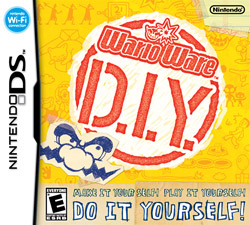
WarioWare D.I.Y., known as WarioWare: Do It Yourself in the PAL region, is a minigame compilation and game creation system by Nintendo SPD and Intelligent Systems and published by Nintendo for the Nintendo DS. It is the seventh title in the WarioWare series and the last to be developed for the Nintendo DS family of systems. Formally revealed at Nintendo's conference in October 2008, the game was released in Japan on April 29, 2009. It was released in 2010 in North America, Europe, and Australia respectively and was accompanied by a separate WiiWare title, WarioWare: D.I.Y. Showcase.

Brain Age Express are three educational puzzle video games developed by Nintendo for the Nintendo DSi's DSiWare download service. They are the third series of games in the Brain Age series, and are repackaged versions of both Brain Age: Train Your Brain in Minutes a Day! and Brain Age 2: More Training in Minutes a Day! games, featuring both old and new puzzles.

The Nintendo DSi system software is a discontinued set of updatable firmware versions, and a software frontend on the Nintendo DSi video game console. Updates, which are downloaded via the system's Internet connection, allow Nintendo to add and remove features and software. All updates also include all changes from previous updates.

Game & Wario is a 2013 party video game developed by Nintendo and Intelligent Systems and published for the Wii U console, named after LCD Game & Watch titles. It is the eighth installment in the WarioWare series and part of the larger Mario franchise. The story stars Wario and his friends, who take advantage of a newly released video game console with two separate screens by making games for monetary gain. Game & Wario consists of 16 minigames that exclusively utilize the Wii U GamePad and its functions. Additional modes and collectibles are also unlockable. The majority of the minigames are single-player, although some are designed for multiplayer only.
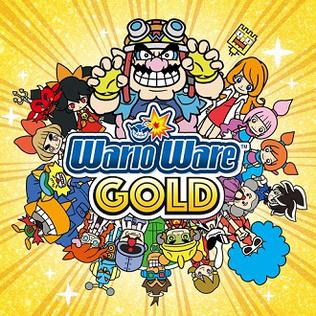
WarioWare Gold is a minigame compilation developed by Intelligent Systems and published by Nintendo for the Nintendo 3DS family of video game consoles. The ninth installment in the WarioWare series, it was released in PAL regions in July 2018, and in North America and Japan the following month. The game's plot follows the greedy Wario who has organized a gaming tournament for a large cash prize, with the ultimate goal of claiming the money for himself. Meanwhile, various other WarioWare characters deal with other problems which play out in the form of short stories.
